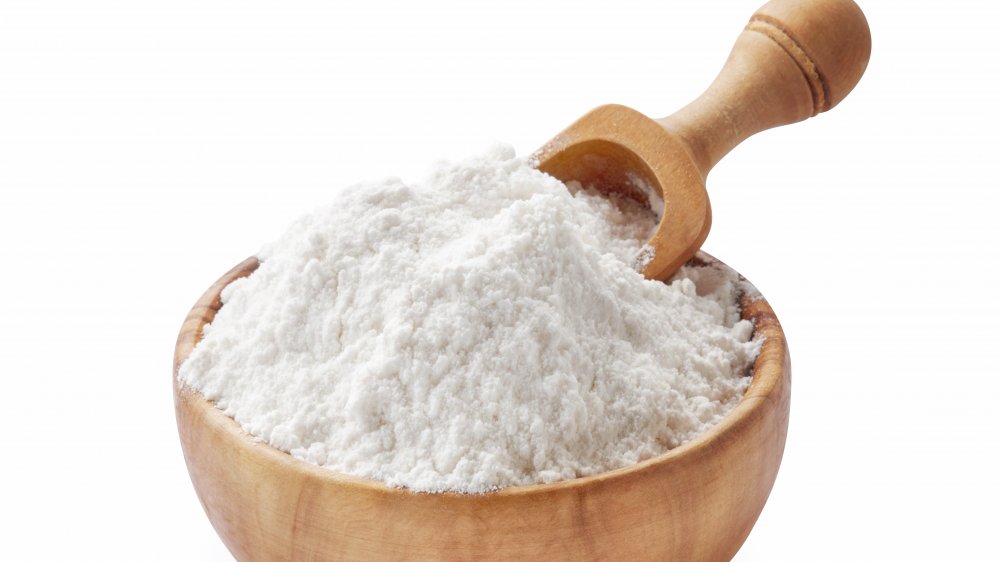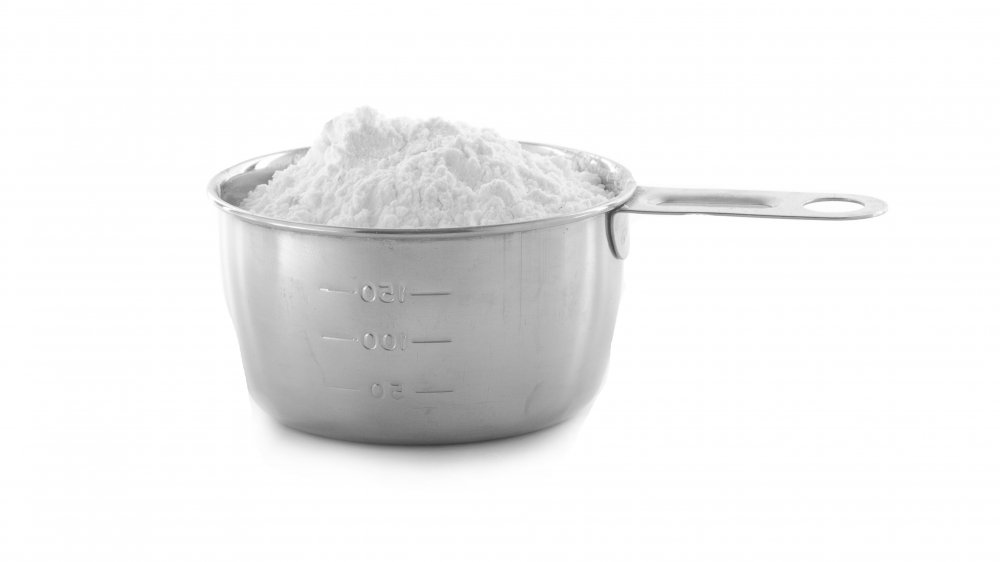Baker Reveals The Correct Way To Measure Flour For Recipes
While there are always some people who claim to be able to throw ingredients in a bowl, stir, and hey, presto, perfect cake batter, there's a chance those people may just be exaggerating a teeny, tiny bit. Either that, or they have an almost supernatural ability to eyeball measurements. For the rest of us, though, Sarah Wais, culinary expert at Wilton, the global leader in the baking and cake decorating space for over 90 years, offers the same words of wisdom. "Baking is a science and science requires accurate measurements. To ensure your recipe, or formula, turns out just right, you need to make sure to properly measure your ingredients."
And for proper measurement, of course you'll need the proper tools. For measuring flour (all-purpose or otherwise), the most important tool is a set of dry measuring cups. Yes, there are actually different types of measuring cups. Wais says that cups meant for measuring liquids have lines on the side, but dry ingredient measuring cups are the ones that come in a set of differently-sized cups — typically marked 1/4, 1/3, 1/2, and 1 cup.
The proper way to use measuring cups to measure flour
"Flour is extremely easy to measure incorrectly," Wais warns. She says you should never use cups to scoop up flour, since this may compact it down and result in too much flour, which in turn will lead to your cakes, cookies, and breads coming out too dry. Instead, she advises the following multi-step (but nonetheless quick and easy) process for measuring flour.
First, give the flour a quick stir with a spoon or whisk before you measure it to loosen it up and counteract its tendency to settle in the bag or container. Next, use a large spoon to scoop the flour into the cup. Wais says not to press the flour down into the cup, and don't tap the cup on the counter, either, as doing so will alter your measurements. Instead, keep lightly spooning in the flour until it's heaped up over the edge. At this point, take the flat edge of a knife or a spatula and sweep it over the cup's surface to level off the flour.
There, that wasn't too hard, was it? Of course, if you are a truly dedicated baking scientist, there is an even better (if more difficult) way to do your measuring. As Wais says, "If you wanted to get even more precise, you could use a kitchen scale to measure flour by weight." A cup of flour typically weighs about 4-1/4 ounces.

